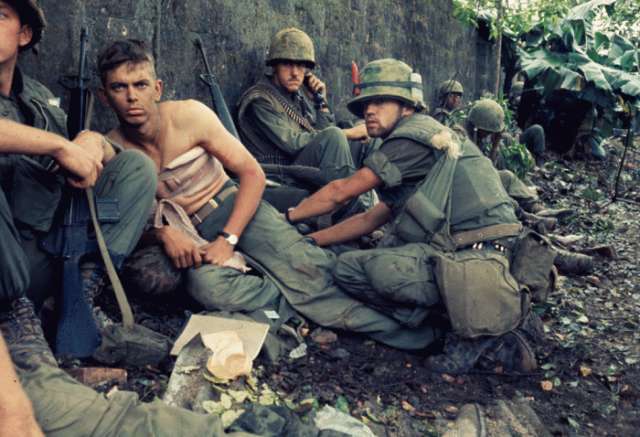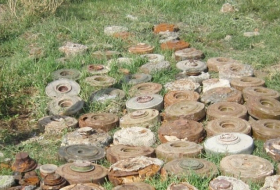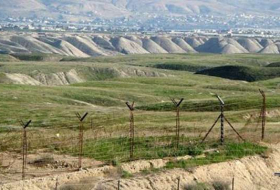National Archives, 700 Pennsylvania Ave. NW; through Jan. 6, 2019, free.
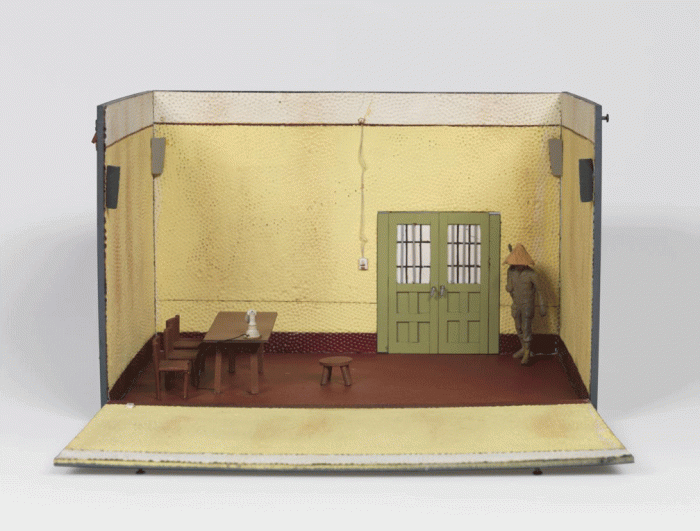
A model of “the Hanoi Hilton” that was used to plan a rescue mission. (Records of the Central Intelligence Agency)
Model of “the Hanoi Hilton”
This undated model of the Hoa Lo prison camp — better known as “the Hanoi Hilton” — looks like a school diorama, but it had a much more important purpose. “I was so stunned when one of our archivists showed it to me because it’s so unlike typical Archives records,” Kamps says. “It was built by the CIA when they were planning an escape effort to try to free some of the prisoners.” To best plan its mission, the CIA tried to get as close as possible to the layout of the real camp, down to the electrical outlets on the walls. Still, no American POW was ever rescued from any North Vietnamese prison, including Hoa Lo.
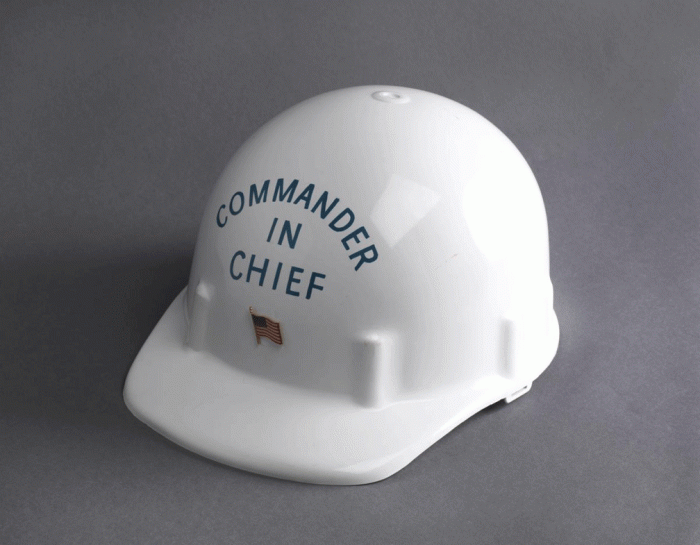
A hard hat presented to Richard Nixon after the Hard Hat Riot. (Richard Nixon Presidential Library)
Hard hat for Nixon
President Richard Nixon received a number of hard hats during his tenure, but not because he was visiting construction sites. In the Hard Hat Riot of 1970, “some construction workers attacked some peace protesters in New York City, and it was pretty violent,” Kamps says. “Afterwards, Nixon praised the construction workers for their support, and they sent hard hats as tribute,” including this one he received in 1970. Still, Kamps says it’s important to remember that attitudes about the war weren’t black and white. “Even at the time there was this notion that the protesters were all hippies and the working class was all for the war, which wasn’t the case,” she says. “Many, many people in the working class hated [the protesters’] behavior, but were against the war. In fact, after the Hard Hat Riot, the first labor protests against the war were staged.”
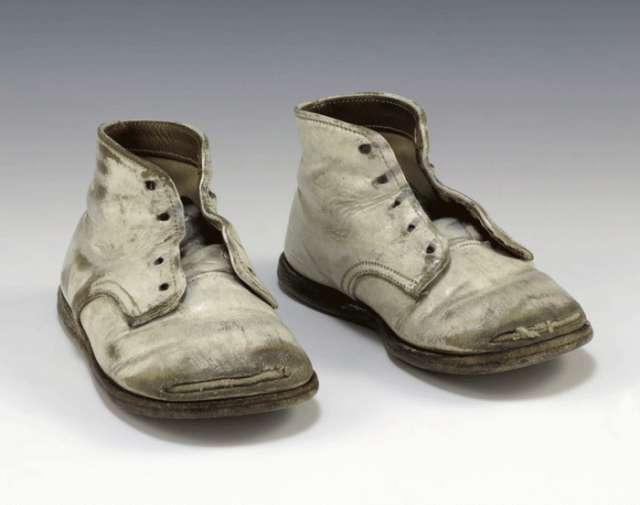
Shoes worn by a child evacuated during “Operation Babylift” (National Archives)
Shoes of evacuated child
When people think of the fall of Saigon in 1975, they usually think of the famous image captured by photographer Hugh Van Es of the final helicopter about to take off from the roof of the U.S. Embassy while people desperately clamber to get aboard. These shoes show a different angle of the South Vietnamese capital’s capture. They came from one of the children evacuated in 1975 as part of “Operation Babylift,” an effort that transported Vietnamese orphans to the U.S. The first flight crashed, killing 78 children and 50 adults, but the program evacuated more than 3,000 children overall.
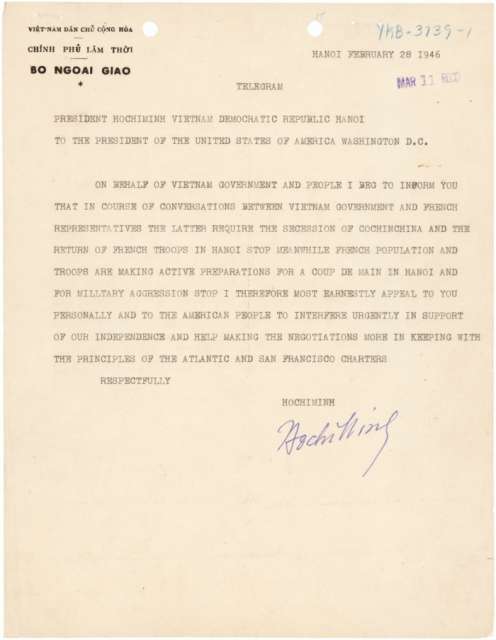
Vietnamese leader Ho Chi Minh asked President Truman for help — to no avail. (National Archives)
Telegram from Ho Chi Minh
Early on, the United States’ involvement in Vietnam was no involvement at all. Vietnam had long been a French colony, but fell to the Japanese during WWII; after the war, the French wanted to recolonize the country. This telegram, sent from North Vietnamese leader Ho Chi Minh to President Harry Truman in 1946, partially says, “I … most earnestly appeal to you personally and to the American people to interfere urgently in support of our independence.” “For many years Ho Chi Minh believed the U.S. could be an ally, given our own war of independence,” Kamps says. However, “rather than oppose France, [Truman] made the decision that we needed to support France because we needed France as a bulwark against communism.” Ho Chi Minh’s request for assistance amounted to nothing.

President Johnson knew what he was getting the armed forces into, and that victory wasn’t a sure thing.
President Johnson audio recording
Among the exhibit’s audio recordings is a 1964 tape of President Lyndon Johnson and his advisers discussing whether to put American soldiers on the ground in Vietnam. “What’s surprising is the degree to which he and other members of the administration had such grave doubts about our chances of success, yet still committed our troops to the conflict,” Kamps says. “It’s not like they went into this thing really confident that this was going to be an easy thing to win. They were well aware, and even questioned the importance of the outcome.”
The original article was published in the Washignton Post.
More about: #Vietnam








